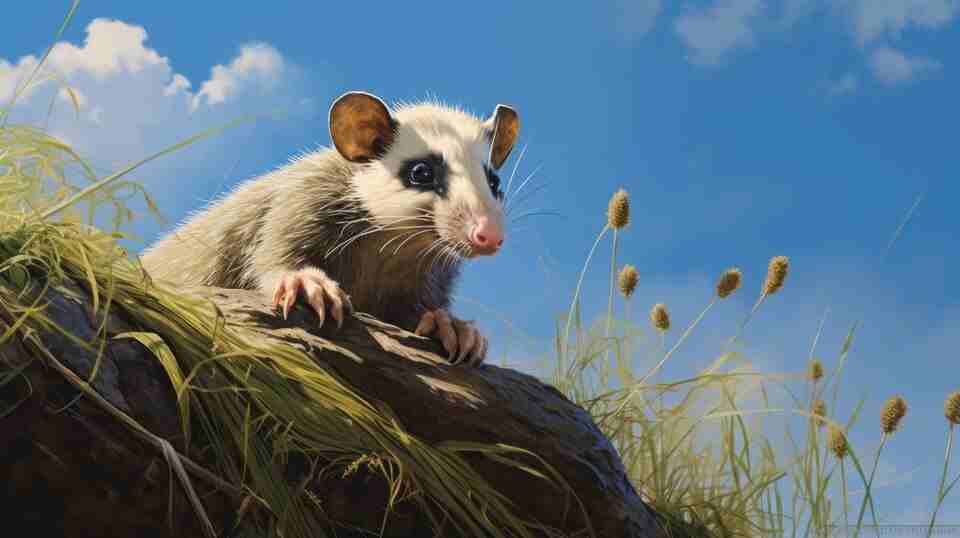Introduction to Tlacuache
The Tlacuache, also known as the opossum, is an interesting nocturnal animal from the Americas. These animals are very well known because of their behavior and adaptability. Scientists have been interested in the night activities of tlacuaches, and detailed observations of their behavior have been made without including basic information.
Nighttime Foraging
Perhaps most notably, tlacuaches forage for food at night. They are opportunistic feeders and boast a broad diet. They feed on fruits, insects, small animals, and human waste. Tlacuaches are good scavengers who usually roam through cities for easy meals. Adaptability to food sources is a key to their survival in diverse environments.
Social Interactions
Although tlacuaches are primarily solitary animals, they do engage in social interactions, especially during mating season. Males and females come together for mating, and these encounters can be quite brief. After mating, females raise the young on their own. Observing the courtship behaviors and the brief interactions between male and female tlacuaches can be pretty enjoyable.
Tlacuache: Defense Mechanisms
Tlacuaches have several defense mechanisms to protect themselves from predators. One of the most famous is “playing dead.” When threatened, a tlacuache will collapse, appearing lifeless, hoping the predator will lose interest. This act can last from a few minutes to several hours. Additionally, they emit a foul-smelling fluid from their anal glands to deter predators. These defense tactics are crucial for their survival in the wild.
Nesting and Den Building
At night, tlacuaches are also busy with nesting activities. They create dens in hollow trees, abandoned caves, or even human structures like attics or garages. These dens provide shelter and a safe place to raise their young. Tlacuaches use leaves, grass, and other soft items to line their nests, ensuring comfort and protection.
Grooming Habits of Tlacuache
Grooming is another significant nighttime activity for tlacuaches. They spend considerable time grooming themselves to remove parasites and keep their fur clean. Grooming helps not only maintain hygiene but also regulate body temperature. Observing a tlacuache grooming can be quite endearing, as they meticulously clean every part of their body.
Unique Hairstyles: Cortes Tlacuaches
Curios, “cortes tlacuaches,” are haircuts that simulate the tlacuaches. Normally, it is a cut that is short on the sides and back of the head, leaving a longer strip—just like the hairline of the tlacuache—on its back. This style becomes very popular in some areas, and people just love the uniqueness and boldness that this brings.


Related Article: How to Train Your Ragdoll Kittens Effectively
Exploring Cortes de Pelo Tlacuaches
“Cortes de pelo tlacuaches” is all of this but with a mix of creativity and art. Sometimes, these styles are also very complex, with intricate swirls and lines drawn into one’s hair. The result is, therefore, mind-blowing and attention-capturing and would leave one with a strong impression at every occasion. Of course, not everyone is daring enough to go out with such an appearance; compliments will be given in heaps for those who do.
Communication Methods
Tlacuaches communicate with each other through a variety of vocalizations and body language. They make hissing, growling, and clicking sounds, especially when threatened or during mating season. Their body language, such as arching their back or baring their teeth, also conveys messages to other tlacuaches or potential threats. Understanding these communication methods provides insight into their social behaviors and interactions.
Adaptation to Urban Environments
In recent years, tlacuaches have increasingly adapted to urban environments. They often find food and shelter in cities, living near humans. This adaptation has led to a rise in nocturnal activities in urban settings, where tlacuaches scavenge for food in trash cans and find shelter in human structures. Their ability to thrive in such environments showcases their remarkable adaptability.
Impact on Ecosystems
Tlacuaches perform an essential function in ecosystems. They are scavengers, cleaning up the environment by feeding upon dead animals and organic refuse. They also help control the population of insects and rodents. Understanding their nocturnal activity allows one to appreciate their importance in the basic functioning of ecosystems.
Tlacuache: Myths and Misconceptions
There are many myths and misconceptions about tlacuaches, even going so far as to say they are pests or harmful animals. Tlacuaches are harmless and play a vital role in the environment. Most of the time, people misunderstand them because of their appearance and because they are nocturnal. Proper public education about their fundamental nature reduces this unwarranted fear and promotes coexistence.
Watching Tlacuaches in the Wild
Nocturnal observers will find much more exciting forays into the natural habitats of tlacuaches. On the other hand, red light torches do not disturb the animals and help spot the creatures without causing them any distress. More observations of their foraging, grooming, and social interactions will unfold detailed insights about this unique species. Observation of tlacuaches in the wild tests patience and an appreciation of nature’s ways.
Conclusion of Tlacuache
Tlacuaches, or opossums in English, are remarkable nocturnal animals with unique behaviors and adaptations. From foraging to grooming, communication, and defense mechanisms, the list of their nocturnal activities goes on, giving a glimpse of their complicated lives. Understanding and appreciating these creatures may help promote their conservation and coexistence with humans. By observing and respecting tlacuache, we can learn more about their vital role in our ecosystems.

